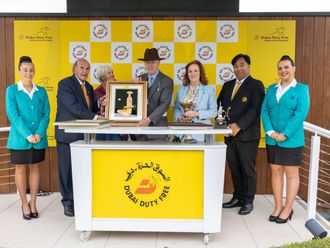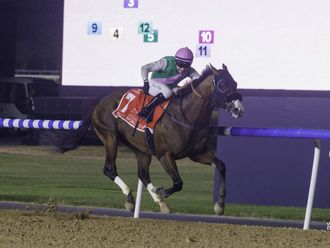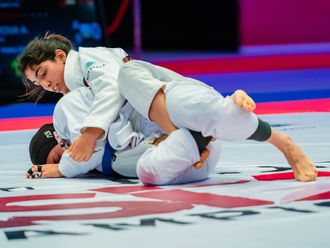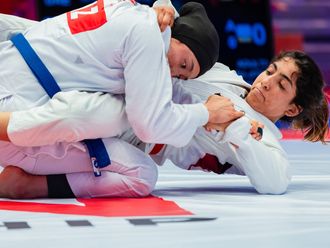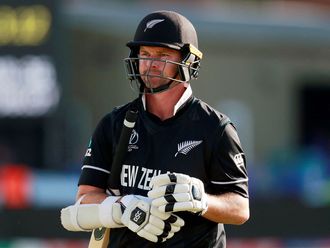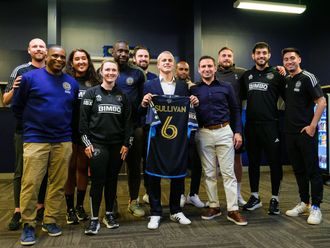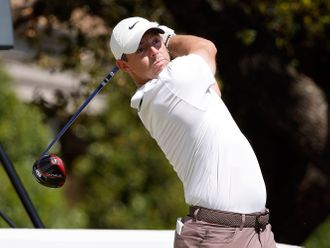Epsom, UK: The great American philanthropist and racehorse owner Paul Mellon, whose horse Mill Reef won it in 1971 once said of The Derby, “sponsored or un-sponsored, may The Derby continue for ever for surely it has been sponsored by Heaven from the beginning.”
If you are ever in this part of England, an hour or two spent strolling the Epsom Downs will be remembered for a lifetime.
Imagine that for the last 236 years, over the exact same hallowed turf, The Derby has been run. Horses owned by kings and queens, the death of Suffragette leader Emily Pankhurst, the huge field of 34 horses in 1862.
Queen Elizabeth’s coronation in 1953 and the long-awaited knighthood of 26-times champion jockey Sir Gordon Richards followed a mere four days later by Sir Gordon and Pinza beating her Majesty’s horse Aureole. The jockey’s 28th and final attempt to win the one race missing on his glittering portfolio before injury forced retirement the next year aged 50. Ponder a moment that it was to be another fifty years before Sir AP McCoy would beat his record of 269 wins in a year.
It’s impossible to imagine how he achieved numbers of such enormity without the use of fast cars, planes and helicopters to rush him from track to track! Awe inspiring to think of so much history and to be able to walk where they have galloped.
“Golfers have Augusta, Tennis players have Wimbledon and jockeys have The Epsom Derby.” This was how Kieran Fallon described its importance. Jockeys will say that its The Track that makes it so special and make no mistake that a mile and a half handicap here on any other race day bears no comparison to riding in the Derby itself.
A “roller coaster” is the oft heard term applied to Epsom, “big dipper” wouldn’t go amiss either! From the start, the grounds rises 180 feet over the first five furlongs — 1000 metres — whilst at the same switching from left to right rail to cut the corner and back to the left for the remainder of the race.
It is vital for a horse to relax through those early stages and not expend too much energy climbing the hill, no easy task when all they first move to the right to save valuable ground and then the whole field crosses back over to the left hand rail. Two road crossings to skip over can cause a hindrance to some, just to add another problem. The crossover is the vital point of the race in which to obtain a good position.
Make no mistake these riders are the best of buddies inside the jockeys room but out there in the Derby cries for “room” will be blatantly ignored! The terrain flattens out as they crest the highest point of the downs and the pace will increase approaching the downhill turn of Tattenham Corner. It can get very rough now as non-stayers start to tire and fall back into the laps of those moving forward.
Being out wide is frowned upon but getting stuck on the rail behind these can be harmful too. At this point, the horse needs to be travelling “on the bridle” to cope at all with galloping down and around the tight configuration of the hill, tired horses get unbalanced quickly and will roll around causing traffic problems.
Upon reaching the straight and starting to race in earnest, the camber leans quite heavily to the left which has the natural effect of making the horses want to go the same way especially the ones whose reserves of stamina are now running on empty, thus requiring top class riding to keep straight and move faster over the relentlessly undulating turf.
As if all this is not enough, there is yet another uphill section as the winning post nears, which will leave vulnerable the horse that has moved too early to the true staying type with a powerful finish.
Kieran Fallon — 3 wins — His opinion is that “you can’t be too far off at the top of the hill, maybe box-seat, just off the pace but close enough to move when you want to. It happens very quickly from the top of Tattenham Corner onwards and you need your wits about you to avoid the non-stayers coming back at you.”
Johnny Murtagh — 3 Derby wins — describes a Derby horse as needing “a combination of speed, stamina, balance and temperament. Lacking slightly in any and he will not win a Derby. Epsom is the hardest course in the world.”
Lester Piggott — 9 wins — tells how Ballydoyle, where Vincent O’Brien and now Aidan O’Brien train has “a gallop which replicates Tattenham Corner and the horses adapted so easily when they came to Epsom.”
Considering that Vincent won 6 Derbys and so far Aidan has accomplished 5 wins, it would be no surprise to see this year’s Derby go to the home of Coolmore, though Godolphin may well have a say in that with their strong team.
— The author is a former trainer from the UK and the mother of leading international jockeys James and Sophie Doyle.



